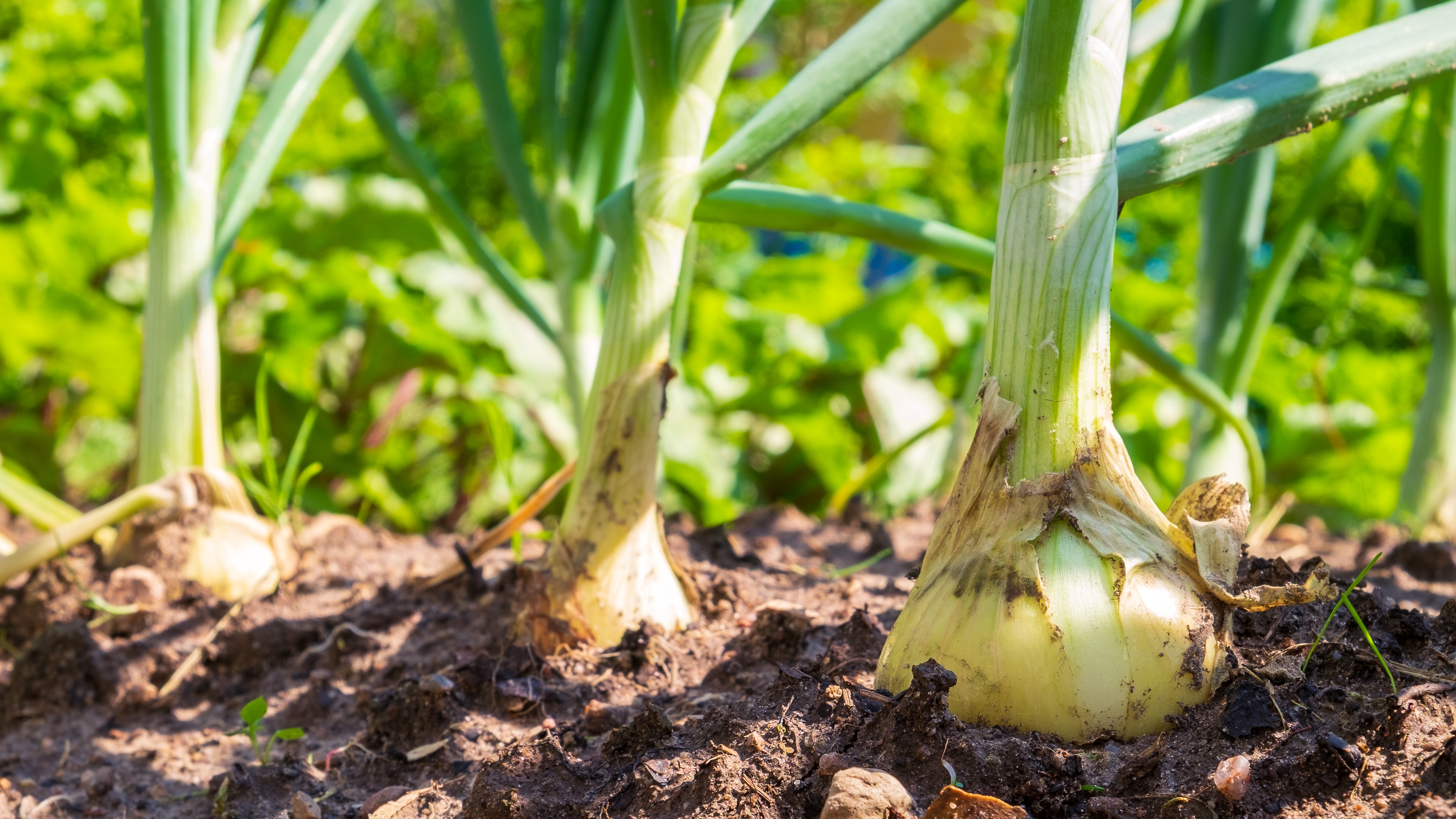Alliums, that is plants belonging to the onion family, are a must-have in your garden! They are low-maintenance, resistant to many pests and diseases, and super-versatile in the kitchen. Alliums are not limited only to onions- shallots, chives, leeks, and garlic are also alliums! Even though they belong to the same plant family, each of these plants has unique growing requirements and culinary characteristics. Whether you’re a gardening newbie or expanding your gourmet garden, there’s an allium for everyone!
Onions (and Shallots)
Onions- the allium family namesake- can be harvested as ‘bulbing onions’ (including what we think of as yellow onions, white onions, and red onions) or as ‘bunching onions’ which are onions grown for their green tops.
To grow bulbing onions, it’s critical to determine whether to grow ‘long-day’ onions, ‘short-day’ onions, or ‘intermediate-day’ (‘day neutral’) onions. This depends on where you live and how many hours of daylight your garden receives in the summer:
- Short-day onions form the best bulbs in southern regions with 11-12 hours of sunlight each day
- Intermediate-day onions work well in regions that receive 12-14 hours sunlight
- Long-day onions will form bulbs in northern regions with 14 or more hours of sunlight (note shallots are typically grown as long-day onions)
Be sure to research bulbing onion varieties that are best suited for your area.
Onions can be grown from ‘sets’ which are small bulbs sold in bags, ‘starts’ which are small pre-started onion plants, or from seed. Sets are easy to work with but they may not produce bulbs as large as onions grown from starts and seeds. Starts are also easy to grow, however if you’re comfortable starting seeds indoors give onion seeds a try!
Onions can be planted outdoors before your last frost date, once the soil is workable. They should be planted about 1-1.5” deep into loose soil that will allow the bulbs to expand. Some gardeners advocate “spooning” onions - scooping some soil out from around the bulb to encourage it to grow outwards. This is not necessary, but if you have the time go for it!
Onions are ready to harvest once the leaves start to flop over. Pull the onions out of the ground, snip off the leaves and roots, gently wipe off any surface dirt, and allow them to dry for two weeks before storing.
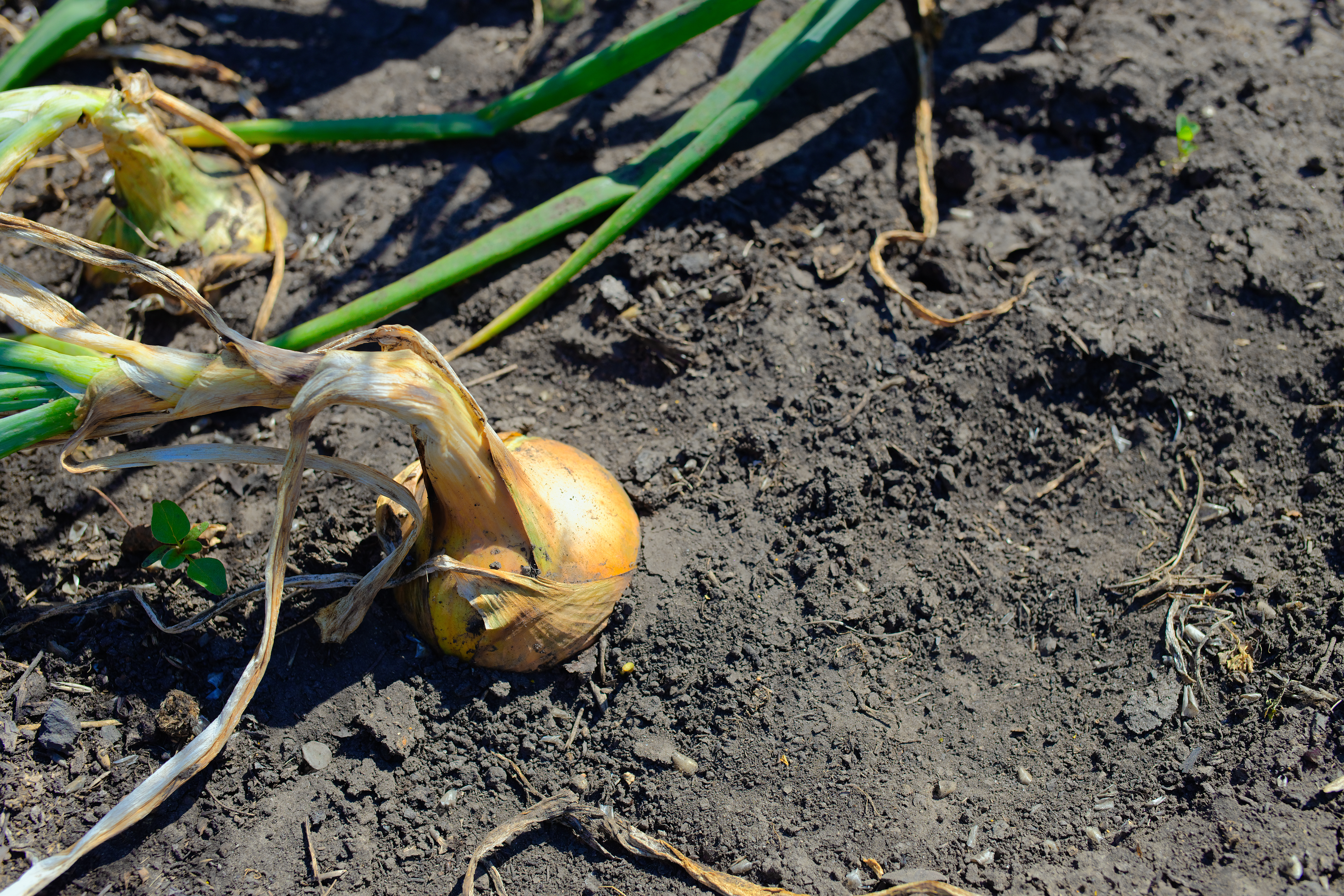
Chives
If you’re looking for the easiest allium to grow, be sure to plant some chives! Chives are hardy perennial herbs that will keep coming back year after year. Chives can be grown from seeds or purchased as transplants. Or, if you have a neighbor growing chives, ask if you could divide them and take a small clump to plant!
Chives are best planted in spring, as they flourish in cooler temperatures- you may find their growth stalls in the summer only to come back again in fall. They like loose, well draining soil and while they are drought-tolerant, they do best with consistent moisture. To harvest chives, simply use garden snips to trim off some leaves near the base of the plant. Chives have a mild onion flavor- similar to green onion but more delicate. Later in spring chives will produce beautiful flower blooms- these are edible too and have the same subtle onion-y flavor!
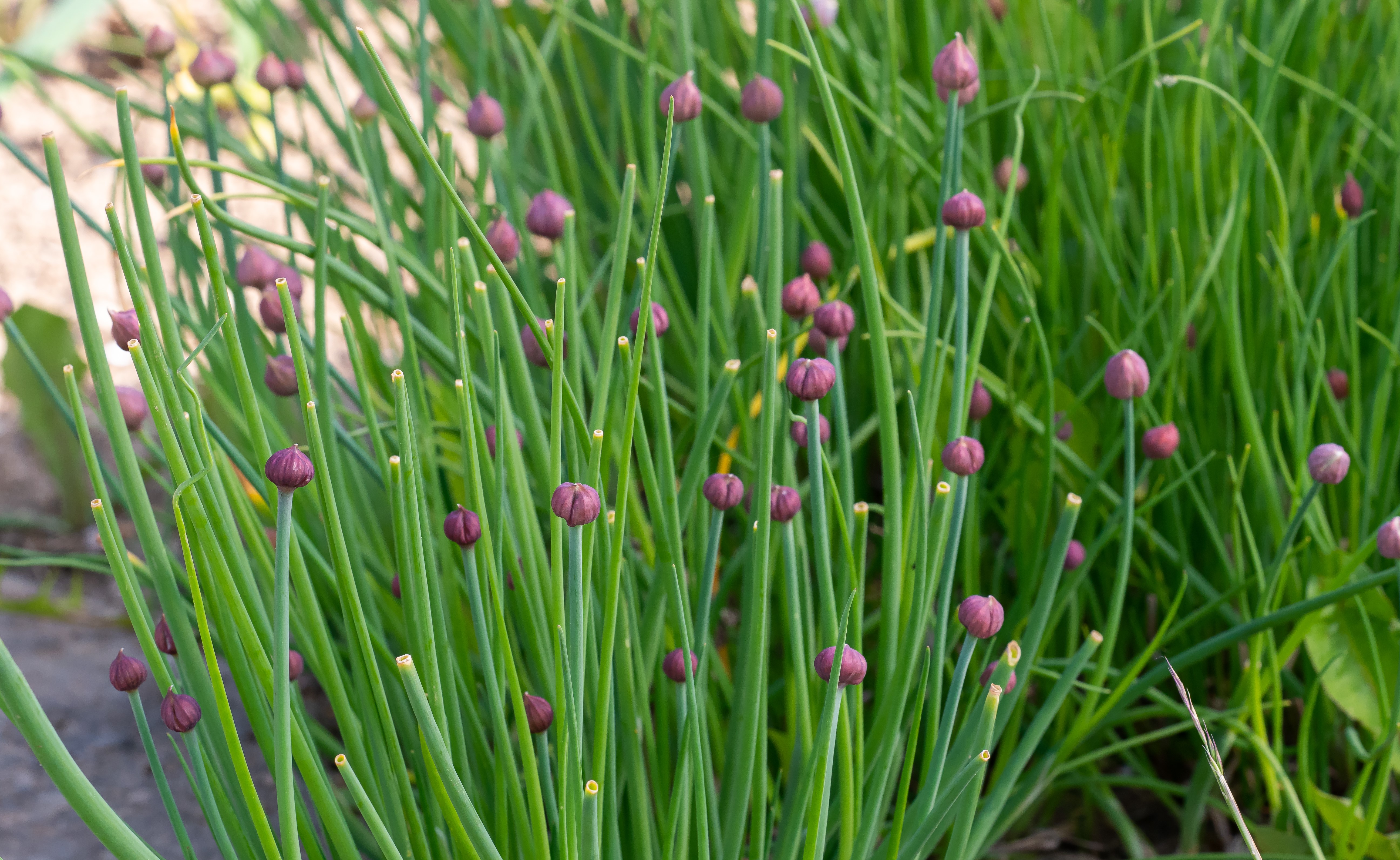
Leeks
Leeks tend to be an expensive gourmet ingredient, but you can grow them in your garden for next to nothing! They are surprisingly easy to grow and have a very unique, gentle onion flavor. Like onions, leeks can be grown from seeds or starts. Leeks with long white stems are prized in the kitchen- the green parts are usually discarded or used for soup stock. To get the desirable white stems they need to be ‘blanched’ - that is covered and protected from the sun. There are a few ways to achieve this: one is by using a tool called a dibber to make holes 6” deep in the soil - into which you can insert young leek plants. Mulch or dry soil can also be hilled up around the leek stems, or cardboard tubes can be used.
One thing to keep in mind is leeks can take a very long time to grow- be sure to plant them with enough time to mature and plan your garden space accordingly.

Garlic
If you enjoy cooking with garlic it is absolutely worthwhile to add garlic to your garden- the flavor of home-grown garlic is incomparable! For best results garlic should be planted in the fall at least two weeks before your first frost date. In a pinch garlic can also be planted once the soil is workable in spring, just be aware that the bulbs will not grow as large. When it comes to choosing garlic varieties it’s important to look for varieties that are adapted to your region. ‘Softneck’ garlic varieties tend to be grown in warmer climates where ‘hardneck’ varieties tend to be grown in colder climates, as they require a prolonged period of cold temperatures. There is also ‘elephant garlic’ which is technically a leek even though it forms bulbs like garlic.
When planting garlic be sure to separate the bulbs into individual cloves, but leave the papery skins on each clove. Plant with the pointed end up/flat end down. How deep to plant your garlic depends on where you live - in colder climates it can be beneficial to plant your garlic up to 4” deep to protect it from winter chill, but in less extreme climates 2-3” is sufficient. Garlic can also be mulched to help protect it over the winter- if using mulch you may not need to plant quite as deep.
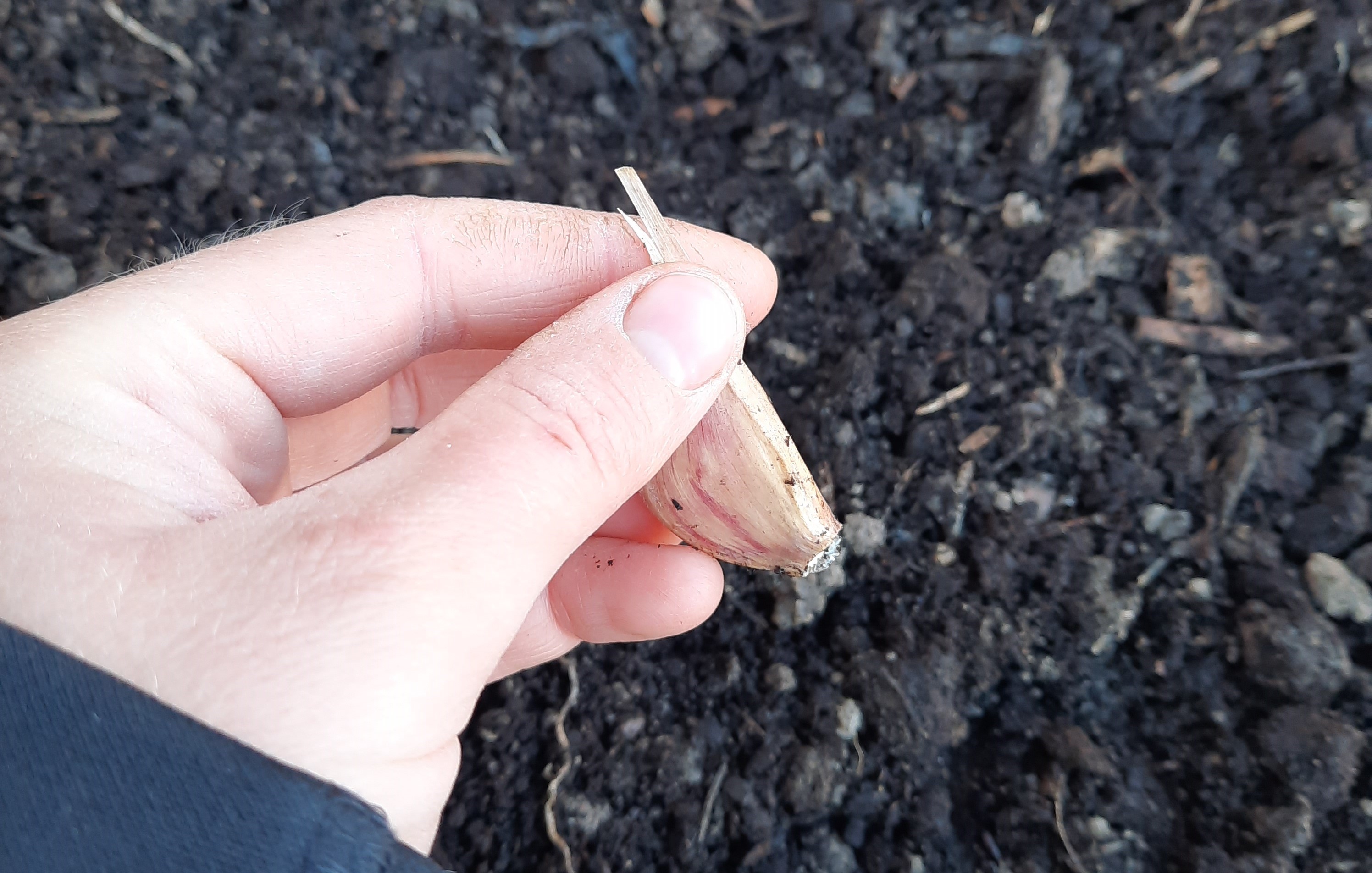
Garlic will emerge and start to grow in springtime. Hardneck garlic will shoot up a curly stem with a flower bud on top called a ‘scape’. Garlic scapes should be removed when they start to curl, to allow the plant to focus energy on bulb development. Garlic scapes are delicious and can be used in any recipe that calls for garlic!
Garlic is ready to harvest once several of its leaves start to wither and die. In some cases garlic can be pulled directly from the soil and in other cases a pitchfork might be in order! Cut off the leaves and roots, gently wipe off any surface dirt, and allow them to dry for two weeks before storing.
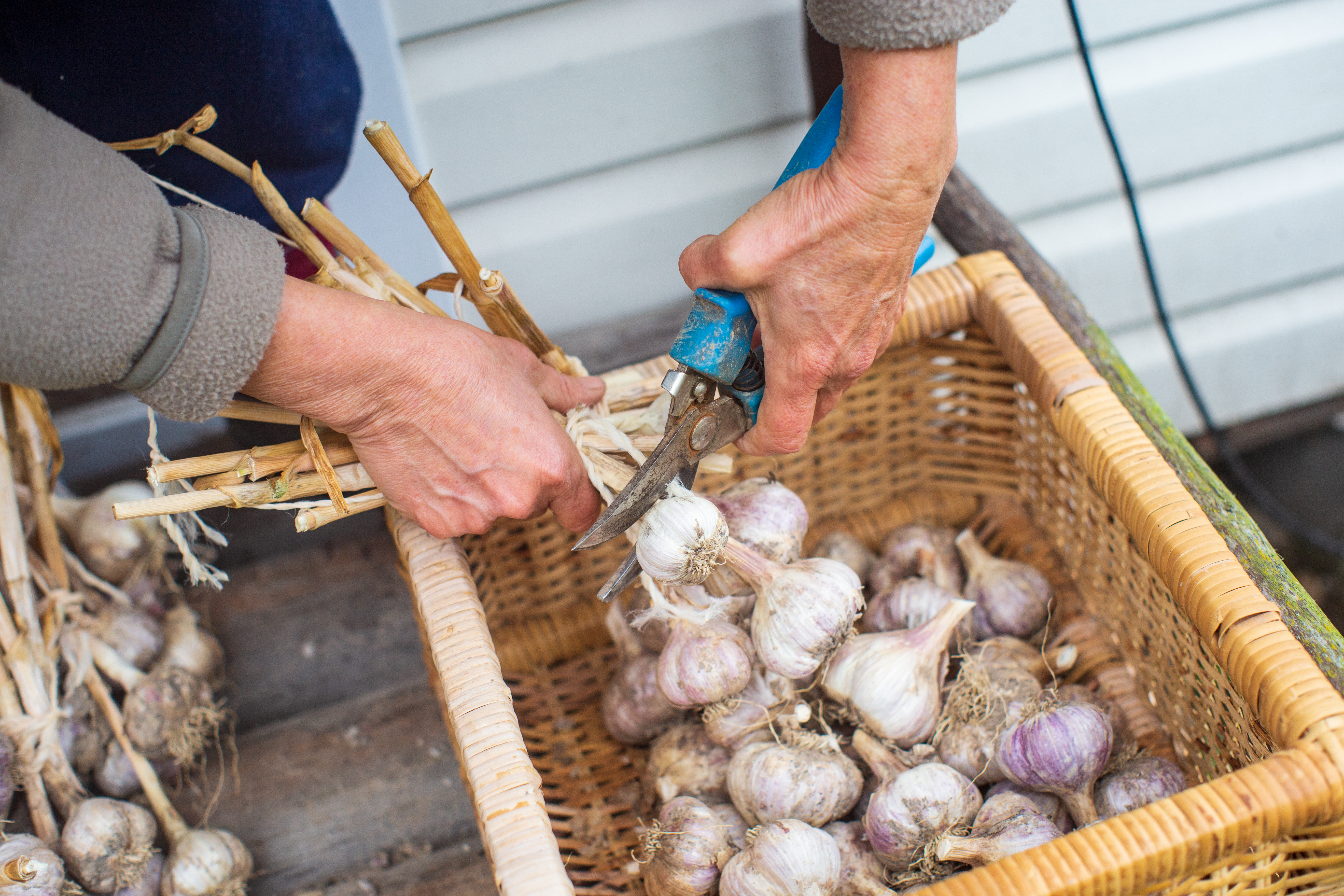
While tomatoes, peppers, and other summer favorites often take center stage in the garden, be sure to save space for alliums- they’re the ultimate low effort, high reward crop!
